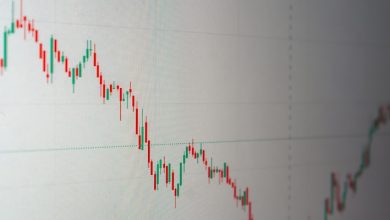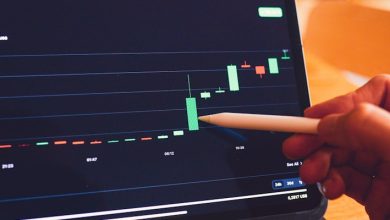Understanding Crypto Market Cycles: Timing Your Trades

- Introduction to Crypto Market Cycles
- The Psychology Behind Market Cycles
- Identifying Market Trends in Cryptocurrency
- Strategies for Timing Your Trades
- Analyzing Historical Data for Market Timing
- Mitigating Risks in Crypto Trading through Timing
Introduction to Crypto Market Cycles
Cryptocurrency market cycles refer to the recurring patterns of price movements in the crypto market. Understanding these cycles is crucial for traders and investors looking to capitalize on the volatility of digital assets.
During a bull market, prices are on the rise, and optimism prevails among market participants. This is typically followed by a bear market, where prices decline, and fear sets in. These cycles can be further broken down into smaller phases, such as accumulation, distribution, and consolidation, each with its own unique characteristics.
By identifying where the market is in its cycle, traders can make more informed decisions about when to buy, sell, or hold their assets. Timing is key in the crypto market, as prices can fluctuate rapidly, presenting both opportunities and risks.
Technical analysis tools, such as moving averages, RSI, and Fibonacci retracement levels, can help traders gauge market sentiment and predict potential price movements. Fundamental analysis, on the other hand, focuses on the underlying factors driving the market, such as regulatory developments, technological advancements, and macroeconomic trends.
It’s important to note that while history may not always repeat itself, it often rhymes in the crypto market. By studying past market cycles and understanding the psychology of market participants, traders can gain valuable insights into future price movements. In the next section, we will delve deeper into the different phases of a crypto market cycle and explore strategies for timing your trades effectively.
The Psychology Behind Market Cycles
The fluctuations in the crypto market can be attributed to various psychological factors that influence market cycles. Understanding the psychology behind these cycles can help traders make more informed decisions when timing their trades.
Investor sentiment plays a crucial role in driving market cycles. During periods of optimism, investors tend to exhibit a “fear of missing out” and are more likely to buy assets at inflated prices. This behavior can create a bubble that eventually bursts when reality sets in, leading to a market correction.
Conversely, during periods of pessimism, investors may panic sell their assets due to a “fear of loss.” This can lead to an oversold market where assets are undervalued, presenting buying opportunities for savvy traders. Understanding these psychological dynamics can help traders anticipate market movements and capitalize on them.
Market cycles are also influenced by herd behavior, where investors tend to follow the crowd rather than conducting their own research. This can lead to exaggerated price movements based on speculation rather than fundamentals. By recognizing these patterns, traders can avoid falling into the trap of herd mentality and make more rational trading decisions.
Furthermore, market cycles are driven by the interplay of greed and fear among investors. Greed can lead to irrational exuberance and asset bubbles, while fear can result in panic selling and market crashes. By keeping emotions in check and maintaining a disciplined approach to trading, investors can navigate market cycles more effectively.
Identifying Market Trends in Cryptocurrency
One of the key aspects of understanding crypto market cycles is identifying market trends in cryptocurrency. By analyzing historical price data and monitoring factors such as trading volume and market sentiment, traders can gain valuable insights into where the market may be headed.
There are several tools and techniques that traders can use to identify market trends in cryptocurrency. Technical analysis, for example, involves studying price charts and using indicators such as moving averages and RSI to identify patterns and trends. Fundamental analysis, on the other hand, involves evaluating the underlying factors that may affect the price of a particular cryptocurrency.
It’s important for traders to keep in mind that market trends in cryptocurrency can be influenced by a wide range of factors, including regulatory developments, macroeconomic trends, and technological advancements. By staying informed and continuously analyzing market data, traders can better position themselves to capitalize on emerging trends and opportunities in the crypto market.
Strategies for Timing Your Trades
When it comes to navigating the volatile waters of the crypto market, timing is everything. Understanding the various market cycles can help you make informed decisions about when to buy or sell your digital assets. Here are some strategies to consider when timing your trades:
- Pay attention to market trends: Keep an eye on the overall market trends to identify patterns that may indicate when it’s a good time to enter or exit a trade.
- Use technical analysis: Utilize technical analysis tools to assess the historical price movements of cryptocurrencies and identify potential entry and exit points.
- Consider market sentiment: Take into account the general sentiment of the market, as fear and greed can heavily influence the direction of prices.
- Set clear goals: Define your trading goals and stick to your strategy to avoid making impulsive decisions based on short-term fluctuations.
- Diversify your portfolio: Spread your investments across different cryptocurrencies to minimize risk and take advantage of various market cycles.
By incorporating these strategies into your trading approach, you can improve your chances of success in the crypto market and make more informed decisions about when to execute your trades.
Analyzing Historical Data for Market Timing
Analyzing historical data is crucial when it comes to timing your trades in the crypto market. By looking at past market cycles, you can gain valuable insights into when to buy or sell your assets. This data can help you identify patterns and trends that may indicate when the market is about to enter a bull or bear phase.
One way to analyze historical data is to use technical analysis tools such as moving averages, relative strength index (RSI), and Fibonacci retracement levels. These tools can help you identify key support and resistance levels, as well as potential entry and exit points for your trades. By combining these indicators with historical price data, you can make more informed decisions about when to enter or exit the market.
Another important aspect of analyzing historical data for market timing is to look at external factors that may influence the crypto market. This includes news events, regulatory changes, and macroeconomic trends that can impact the price of cryptocurrencies. By staying informed about these factors and how they have affected the market in the past, you can better anticipate how they may impact future market cycles.
In conclusion, analyzing historical data is an essential part of timing your trades in the crypto market. By using technical analysis tools and staying informed about external factors, you can make more strategic decisions about when to buy or sell your assets. Remember to always do your own research and never rely solely on historical data when making trading decisions.
Mitigating Risks in Crypto Trading through Timing
One of the most effective ways to mitigate risks in crypto trading is by carefully timing your trades. By understanding the various market cycles that cryptocurrency goes through, you can make more informed decisions on when to buy or sell your assets.
Timing plays a crucial role in determining the success of your trades. For instance, during the accumulation phase, it may be wise to buy assets at lower prices before the market enters a bullish phase. Conversely, during the distribution phase, selling off assets at higher prices can help you maximize profits and avoid potential losses.
By studying historical data and trends, you can identify patterns that indicate when a particular cryptocurrency is likely to enter a new cycle. This can help you anticipate market movements and make strategic decisions based on the timing of these cycles.



